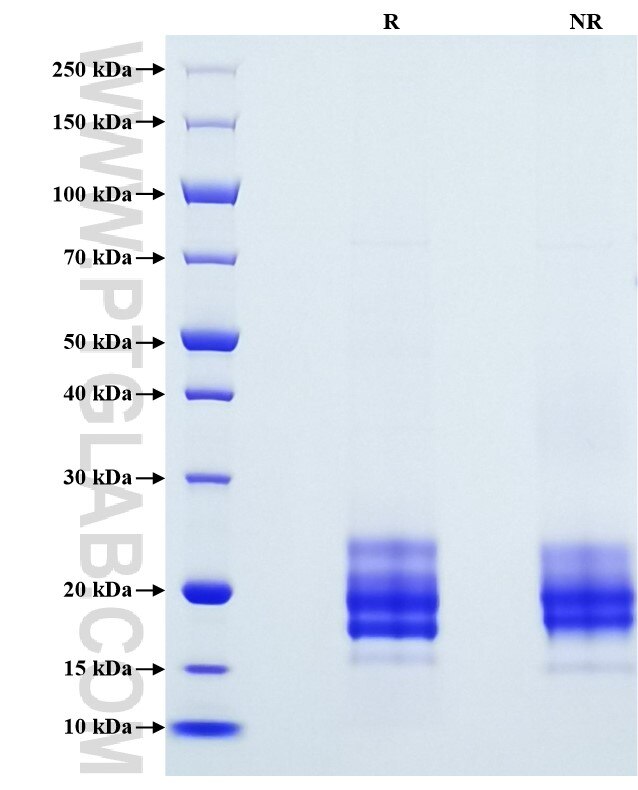Recombinant Mouse Flt3 ligand protein (His Tag)
Species
Mouse
Purity
>90 %, SDS-PAGE
Tag
His Tag
Activity
not tested
Cat no : Eg0677
Validation Data Gallery
Product Information
| Purity | >90 %, SDS-PAGE |
| Endotoxin | <0.1 EU/μg protein, LAL method |
| Activity |
Not tested |
| Expression | CHO-derived Mouse Flt3 ligand protein Gly27-Arg188 (Accession# P49772-1) with a His tag at the C-terminus. |
| GeneID | 14256 |
| Accession | P49772-1 |
| PredictedSize | 19.5 kDa |
| SDS-PAGE | 17-25 kDa, reducing (R) conditions |
| Formulation | Lyophilized from 0.22 μm filtered solution in PBS, pH 7.4. Normally 5% trehalose and 5% mannitol are added as protectants before lyophilization. |
| Reconstitution | Briefly centrifuge the tube before opening. Reconstitute at 0.1-0.5 mg/mL in sterile water. |
| Storage Conditions |
It is recommended that the protein be aliquoted for optimal storage. Avoid repeated freeze-thaw cycles.
|
| Shipping | The product is shipped at ambient temperature. Upon receipt, store it immediately at the recommended temperature. |
Background
Flt-3 Ligand, also known as FLT3L, is a cytokine that is of paramount importance in the proliferation of primitive hematopoietic progenitors. By acting on its receptor Flt-3 (CD135) and synergizing with other cytokines, FLT3L plays a pivotal role in promoting myeloid and lymphoid progenitors proliferation and differentiation. Besides regulating the development of immune cells during steady-state conditions, FLT3L levels are raised upon inflammation. For example, increased serum levels of FLT3L have been observed during malaria in mice. Previous studies have shown that mice lacking FLT3L have deficient hematopoiesis function, resulting in reduced numbers of hematopoietic progenitor cells, dendritic cells, and natural killer cells.
References:
1. Solanilla A, et al. (2000). Leukemia. 14(1): 153-162 2. Ramos MI, et al. (2014). Autoimmun Rev. 13(2):117-124 3. Pierre Guermonprez, et al. (2013). Nat Med. 19(6): 730-738 4. Sara M. Parigi, et al. (2018). Scientific Reports. 8: 154 5. McKenna HJ, et al. (2000). Blood. 95(11): 3489-3497.

